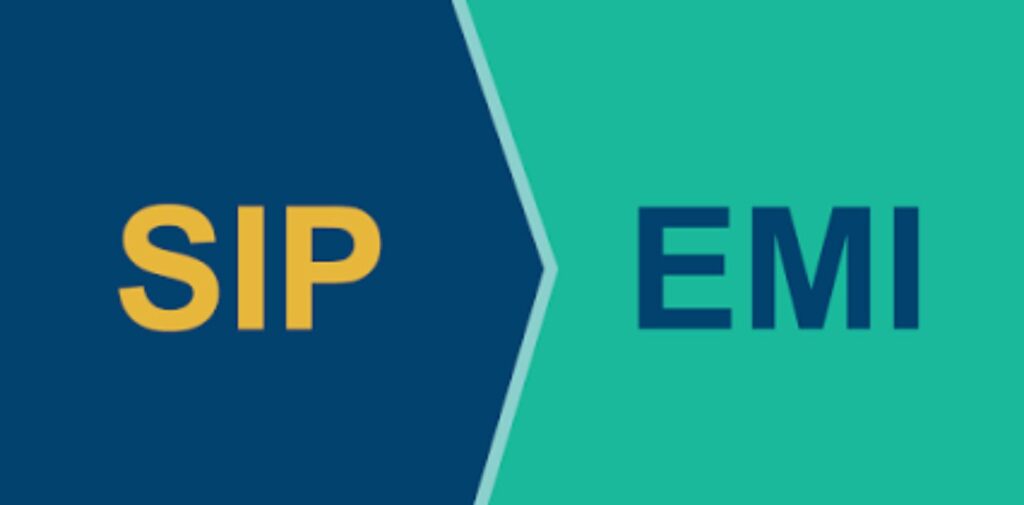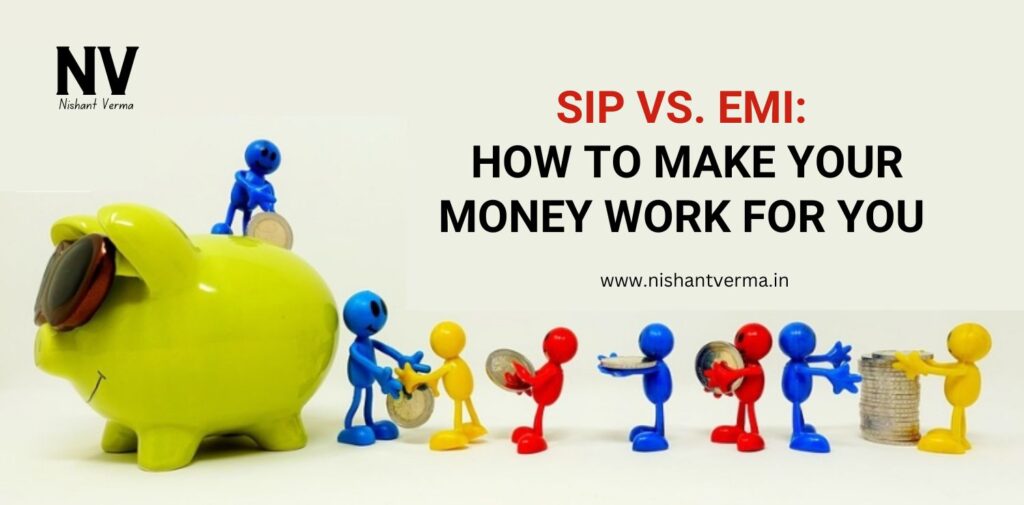In today’s financial landscape, making smart decisions with your money can significantly impact your future. Two common financial strategies are Systematic Investment Plans (SIPs) and Equated Monthly Installments (EMIs). While they both involve managing your money, they serve different purposes and have distinct advantages. Let’s explore these concepts in detail to help you make informed choices about your financial journey.
What is a Systematic Investment Plan (SIP)?
A Systematic Investment Plan, or SIP, is a method of investing in mutual funds where you invest a fixed amount of money regularly—monthly, quarterly, or annually. This approach allows you to build wealth over time through disciplined and consistent investing.

How SIPs Work
When you start an SIP, you choose a mutual fund scheme and decide how much you want to invest regularly. Your chosen amount is automatically deducted from your bank account and invested in the mutual fund. This process continues for the duration you’ve specified.
The key benefits of SIPs include:
- Discipline in Saving: Regular contributions encourage a habit of saving and investing.
- Compounding Benefits: Investing regularly allows you to benefit from compound interest, where your earnings generate their own earnings.
- Affordability: SIPs enable you to start investing with a small amount, making it accessible for everyone.
- Mitigation of Market Risk: By investing regularly over a long period, SIPs help average out the cost of investments, reducing the impact of market volatility.
What are Equated Monthly Installments (EMIs)?
Equated Monthly Installments (EMIs) are a method of repaying loans. When you borrow money from a bank or financial institution, you agree to repay the loan amount in fixed monthly payments over a specified period. This fixed payment includes both principal and interest.

How EMIs Work
When you take out a loan, the lender calculates the total amount you need to repay, which includes the principal loan amount and the interest. The total repayment amount is divided into equal monthly installments over the loan tenure. Each EMI includes a portion of the principal and the interest charged.
The key aspects of EMIs are:
- Predictable Payments: EMIs provide a clear repayment schedule, making it easier to budget and manage finances.
- Immediate Benefits: You receive the full loan amount upfront, which can be used for various purposes like buying a house, car, or funding education.
- Loan Tenure Flexibility: You can choose a tenure that suits your financial situation, impacting the EMI amount and overall interest paid.
SIP vs. EMI: The Core Differences
Understanding the fundamental differences between SIPs and EMIs can help you make more informed financial decisions. Here’s a comparison:
Objective
- SIP: Aimed at building wealth and achieving long-term financial goals, such as retirement or education. It involves investing money to grow over time.
- EMI: Focuses on repaying borrowed money. It involves paying back the principal and interest on a loan.
Investment vs. Repayment
- SIP: Your money is working for you. Regular investments in mutual funds potentially grow due to market performance and compounding.
- EMI: You are working to pay back borrowed money. The payments include interest, which can sometimes feel like a burden, especially if the loan amount is significant.

Risk and Returns
- SIP: Investments in mutual funds are subject to market risks. Returns are not guaranteed but can be substantial over time due to compounding.
- EMI: There is no investment risk, but you are liable for repaying the loan with interest. The total amount paid over the loan tenure can be much higher than the borrowed amount.
Flexibility
- SIP: Offers flexibility in terms of investment amount and frequency. You can adjust your SIP contributions based on your financial situation.
- EMI: Typically, the EMI amount and tenure are fixed once the loan is sanctioned. Early repayment might incur penalties depending on the loan terms.
How to Make the Most of SIPs and Manage EMIs
Maximizing SIP Benefits
- Start Early: The earlier you start investing in an SIP, the more you benefit from compounding and market growth.
- Be Consistent: Regular contributions are key to building wealth through SIPs. Avoid missing payments to stay on track.
- Choose the Right Fund: Research and select mutual funds that align with your financial goals and risk tolerance.
- Monitor Performance: Regularly review the performance of your SIP to ensure it meets your investment objectives.

Managing EMIs Effectively
- Budget Wisely: Ensure your budget accommodates EMI payments without straining your finances.
- Consider Refinancing: If possible, refinance your loan to secure a lower interest rate and reduce your EMI burden.
- Make Prepayments: If you have extra funds, consider making prepayments to reduce the total interest paid and shorten the loan tenure.
- Avoid Over-Borrowing: Only borrow what you can comfortably repay to avoid financial stress and potential defaults.
Conclusion: Smart Financial Planning for a Brighter Future
Choosing between SIPs and EMIs depends on your financial goals and current needs. SIPs are excellent for growing your wealth over time, while EMIs are necessary for managing loans and debts. Understanding these financial tools and using them wisely can help you achieve financial stability and success.
Remember, effective financial planning involves both investing wisely and managing debts responsibly. By integrating both SIPs and EMIs into your financial strategy, you can create a balanced approach that ensures your money works for you, rather than the other way around. So, think wisely, start your SIP journey, and make informed decisions about managing your EMIs.




